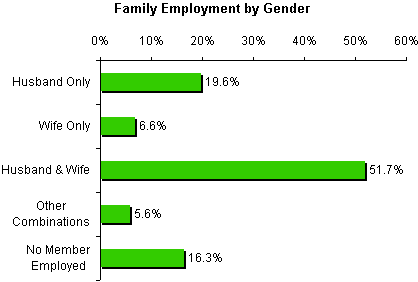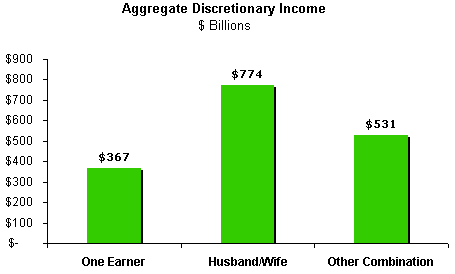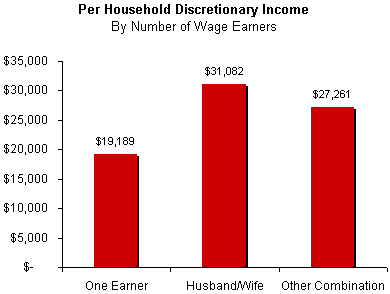IDEX Online Research: Jewelers - Target Female Self-Purchasers, Part IV
July 07, 09
The model family of the 1950s, Dad is the sole earner and Mom is at home cooking three hot meals a day, is hard to be found in the U.S. these days. In this multi-part series, we are looking at what this means for jewelers. The good news: more women than ever before work outside of the home and now have the discretionary income to buy jewelry for themselves. The opportunity: Dual Incomes.
Dual Incomes Fuel Personal Income and Wealth Levels
Both the husband and the wife work in just over half of all married-couple families in the U.S. Thus, these dual income families have high levels of income, and often engage in significant discretionary spending. About 75 percent of all families in America are classified as “married couples.”
The man is the sole breadwinner in just under 20 percent of all families – and is the sole breadwinner in just 9.8 percent of all families with children under 18 living at home.
The graph below illustrates the combinations of employment by family member.

Source: BLS
In households where both the husband and wife work, the level of discretionary income is much higher than in households were only one spouse works. Further, the aggregate amount of discretionary income in those households represents a dramatically larger market segment than any other market segment comprised of various numbers of wage earners in a household.
In a study by the Conference Board in 2006, research showed that the total after-tax income generated in households with both a husband and wife working was nearly $2.3 trillion, about 70 percent more than the aggregate after tax income generated in households with only one spouse working. The two-earner households had an aggregate of nearly $775 billion of discretionary income, more than double the aggregate amount of discretionary income in households with only one wage earner.
The graph below illustrates the relative amount of discretionary income in households by number of wage earners. Clearly, those households with two earners have significantly more income, as a demographic category in the U.S. market.

Source: Conference Board
The graph below illustrates the amount of discretionary income on a per household basis in households by number of wage earners. When there are two or more wage earners, the level of discretionary income per household jumps.

Source: Conference Board